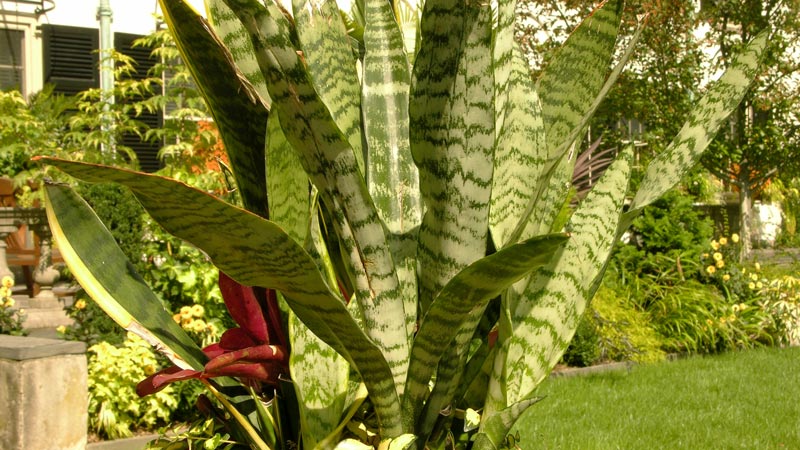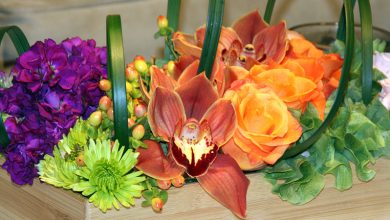Top 10 Houseplants Cats Won’t Eat

Houseplants add a refreshing touch of nature to any home, transforming living spaces into serene, vibrant havens. However, for cat owners, the choice of greenery can be tricky. Curious felines are notorious for nibbling on anything within reach, often turning our beloved plants into chew toys.
The challenge lies in finding houseplants that not only enhance the beauty of your home but also remain untouched by your furry friends. Fortunately, there are houseplants cats won’t eat—plants that are not only aesthetically pleasing but also less appealing to your feline companions.
These cat-resistant plants allow you to enjoy the best of both worlds: a lush, green home and a happy, healthy cat. Whether you’re a seasoned plant enthusiast or just starting your indoor garden, knowing which houseplants cats won’t eat can make all the difference in creating a harmonious home environment.
Read More: Best Apartment Plant Decor Ideas
Why Cats Eat Plants?
Cats eating plants is a common behavior that can be puzzling for pet owners. While it might seem odd, there are several reasons why cats are drawn to nibbling on greenery:
1. Natural Instincts
Cats, both domestic and wild, have a natural instinct to chew on plants. In the wild, felines consume vegetation as a way to aid digestion or to induce vomiting when they’ve ingested something that doesn’t sit well with them. This behavior is thought to help them expel furballs or other indigestible materials from their system.
2. Nutritional Cravings
Some cats may chew on plants because they’re seeking certain nutrients that are lacking in their diet. For example, cats might be drawn to the fiber in plants, which can aid in digestion. Although commercial cat foods are formulated to meet all their dietary needs, some cats might still feel the urge to supplement their diet with plant material.
3. Boredom or Curiosity
Cats are naturally curious creatures and often explore their environment by tasting things. If a cat is bored, it may turn to your houseplants for entertainment. The texture, movement, or even the taste of leaves can be intriguing to a cat, prompting them to take a nibble.
4. Attention-Seeking Behavior
Some cats learn that chewing on plants gets a reaction from their owners. If your cat knows that biting a plant will get them attention, even if it’s negative, they might continue the behavior as a way to engage with you.
5. Mimicking Outdoor Behavior
Cats who spend time outdoors might eat grass or other plants as part of their natural behavior. Indoor cats may mimic this behavior with houseplants, especially if they don’t have access to grass or other outdoor vegetation.
6. Teething or Oral Discomfort
Kittens or young cats might chew on plants because they’re teething and looking for something to gnaw on. Similarly, an adult cat with dental issues or discomfort might chew on plants to soothe their gums.
Read More: Top 10 Ideas for Bedroom Interior Design with Plants
Understanding why cats eat plants can help you better manage this behavior. By providing appropriate alternatives, such as cat grass or interactive toys, you can satisfy your cat’s instincts without sacrificing your houseplants.

The Importance of Choosing Cat-Friendly Houseplants
Choosing cat-friendly houseplants is crucial for creating a safe and harmonious home environment for both your plants and your feline companions. While houseplants can enhance the beauty and tranquility of your living space, many common varieties are toxic to cats and can pose serious health risks if ingested.
By carefully selecting houseplants cats won’t eat, you not only protect your curious pets from potential harm but also prevent damage to your cherished greenery. These cat-resistant plants are less likely to tempt your feline friends into nibbling, reducing the likelihood of accidents and ensuring that your indoor garden remains intact.
Opting for houseplants cats won’t eat is an essential step in balancing the aesthetic appeal of your home with the well-being of your pets, allowing you to enjoy the benefits of indoor gardening without the constant worry of your plants being chewed up or your cats falling ill.
Read More: Understanding the Disadvantages of Artificial Flowers
Top 10 Houseplants Cats Won’t Eat
For cat owners, decorating with houseplants can feel like walking a tightrope. While houseplants bring life and tranquility into our homes, many common varieties can pique a cat’s curiosity, leading to chewed leaves, toppled pots, and potential health risks.
Thankfully, there are houseplants cats won’t eat—plants that are not only safe but also less likely to tempt your feline friends into a nibbling frenzy. This list of top 10 houseplants cats won’t eat combines beauty and practicality, offering you peace of mind as you green up your living space.
1. Spider Plant (Chlorophytum comosum)
The Spider Plant is a resilient, low-maintenance option that thrives in various conditions. While its arching leaves are captivating, the taste seems to repel most cats. It’s also non-toxic, making it a safe addition to your home.
2. Snake Plant (Sansevieria trifasciata)
Known for its striking upright leaves, the Snake Plant is a popular choice for modern interiors. It’s tough, easy to care for, and its slightly bitter taste deters cats from making it a snack.
3. Boston Fern (Nephrolepis exaltata)
The lush, feathery fronds of the Boston Fern add a touch of elegance to any room. While it’s safe for pets, its texture is usually unappealing to cats, keeping it intact and thriving.
4. Areca Palm (Dypsis lutescens)
This tall, graceful palm brings a tropical vibe to your home. Cats tend to leave its long, slender fronds alone, and it’s non-toxic, making it a safe bet for pet owners.
5. Prayer Plant (Maranta leuconeura)
The Prayer Plant, with its striking leaf patterns and colors, is not only a visual delight but also cat-resistant. Its leaves fold up at night, making it even less enticing to curious paws.
6. Haworthia (Haworthia spp.)
A small, hardy succulent, Haworthia is an excellent choice for those with limited space. Its tough, spiky leaves are a natural deterrent for cats, and it’s safe if accidentally nibbled.
7. Rosemary (Salvia rosmarinus)
Beyond its culinary uses, Rosemary is a great houseplant that cats won’t eat. Its strong, aromatic scent and woody texture make it unappealing to felines, while adding a fragrant touch to your home.
8. Ponytail Palm (Beaucarnea recurvata)
Despite its name, the Ponytail Palm is actually a succulent. Its thick trunk and long, cascading leaves are visually striking, but its leathery texture usually keeps cats at bay.
9. Cast Iron Plant (Aspidistra elatior)
True to its name, the Cast Iron Plant is nearly indestructible. It tolerates low light and neglect, and its tough, broad leaves aren’t tempting to cats, making it a perfect low-maintenance option.
10. Peperomia (Peperomia spp.)
Peperomia comes in a variety of shapes and colors, offering versatility in your plant selection. While its waxy, fleshy leaves are appealing to humans, cats generally find them uninteresting and leave them alone.
By choosing houseplants cats won’t eat, you can enjoy the beauty of indoor greenery without constantly worrying about your feline friends getting into trouble.
Read More: The 10 Best Christmas Artificial Flower Arrangement Ideas
These plants not only withstand the curiosity of cats but also contribute to a healthier, more peaceful living environment for both you and your pets.

Characteristics of Houseplants Cats Tend to Avoid
When selecting houseplants, it’s important to consider not only their aesthetic appeal but also their suitability for households with cats. Some houseplants cats won’t eat are specifically chosen for their characteristics that make them less appealing to curious felines.
Understanding these traits can help you select plants that blend seamlessly into your home while minimizing the risk of feline interference. Here are key characteristics of houseplants cats tend to avoid, ensuring a harmonious environment where both your plants and pets can thrive.
List of Characteristics of Houseplants Cats Tend to Avoid
- Tough, Spiky Leaves Houseplants with tough, spiky, or serrated leaves are less likely to attract cats. The rough texture can deter felines from chewing, as it is uncomfortable or unappealing to their sensitive mouths.
- Strong, Pungent Scents Plants with strong, aromatic scents are often avoided by cats. The robust smells of plants like rosemary or certain herbs can be overwhelming for their keen noses, making them less likely to be nibbled on.
- Bitter or Unpleasant Tastes Many plants have naturally bitter or unpleasant flavors that discourage cats from chewing on them. These plants are often left alone because the taste is off-putting to them.
- Woody or Fibrous Textures Houseplants with woody or fibrous textures are typically not appealing to cats. The coarse texture can be off-putting and less inviting for a cat that is exploring with its mouth.
- Low Maintenance and Hardy Varieties Plants that are hardy and low-maintenance, such as succulents and certain palms, are less likely to be targeted by cats. Their durability and minimal fuss make them less interesting to cats compared to delicate or high-maintenance plants.
- High Placement or Suspended Pots Cats are less likely to reach for plants that are placed out of their reach. Houseplants positioned on high shelves or in hanging pots are generally safe from feline curiosity.
- Non-Toxic Varieties Non-toxic houseplants are a smart choice for cat owners. These plants are safe if ingested in small amounts, and their lack of toxic compounds means that even if cats do sample them, there is little risk of harm.
By choosing houseplants with these characteristics, you can create a visually appealing and pet-friendly environment. Understanding what traits make plants less attractive to cats helps in selecting houseplants cats won’t eat, ensuring both your greenery and your feline friends coexist peacefully.
Read More: The 10 Best Artificial Tropical Flower Arrangements Ideas
Caring for Houseplants Cats Won’t Eat
Caring for houseplants that cats won’t eat involves understanding both the needs of your plants and strategies to maintain a pet-safe environment.
By choosing plants that are less likely to attract your feline friends, you create a more harmonious home. Here’s a guide on how to properly care for these cat-resistant houseplants while ensuring they thrive and remain a beautiful part of your indoor space.
1. Optimal Light Conditions
Different houseplants have varying light requirements. Ensure that each plant receives the appropriate amount of light for its needs, whether it’s bright, indirect light or lower light conditions. Adjust the placement of your plants accordingly to keep them healthy and vibrant.
2. Appropriate Watering
Overwatering or underwatering can be detrimental to houseplants. Follow the specific watering guidelines for each plant type, and be attentive to signs of water stress, such as wilting or yellowing leaves. Most cat-resistant plants are hardy and have specific watering needs, so adjusting your care routine based on these requirements will help maintain their health.
3. Proper Soil and Drainage
Use the right type of soil for each plant, as different plants have different soil preferences. Ensure that pots have proper drainage to prevent waterlogging, which can lead to root rot. Well-drained soil and pots with drainage holes are crucial for the longevity of your houseplants.
4. Regular Feeding
Feed your houseplants according to their specific nutritional needs. Some plants require regular fertilization, while others need less frequent feeding. Using a balanced, plant-appropriate fertilizer will help your houseplants grow robust and lush.
5. Dusting and Cleaning
Dust can accumulate on plant leaves, hindering their ability to photosynthesize. Gently wipe the leaves with a damp cloth or use a soft brush to remove dust and debris. Keeping plants clean not only helps them look their best but also ensures they can absorb light efficiently.
6. Pest Control
Even houseplants that cats won’t eat can be susceptible to pests. Regularly check for common plant pests such as spider mites, aphids, or mealybugs. Address any infestations promptly with appropriate treatments, such as insecticidal soap or neem oil.
7. Pruning and Maintenance
Regular pruning helps to maintain the shape and health of your plants. Remove any dead or yellowing leaves and trim back any overgrown stems to encourage new growth and prevent the plant from becoming leggy.
8. Safe Placement
While houseplants cats won’t eat are less likely to be nibbled on, placing them in high or out-of-reach locations can further ensure their safety from feline curiosity. Additionally, using decorative plant stands or hanging planters can keep plants safe from both cats and potential accidents.
Read More: Top 10 artificial flower vase decoration ideas
9. Avoiding Toxic Chemicals
If you use any pest control products or fertilizers, make sure they are pet-safe. Avoid using chemicals that could harm your cat if they come into contact with them. Opt for natural or non-toxic alternatives whenever possible.
By following these care tips, you can ensure that your houseplants not only remain safe from your cat’s curiosity but also thrive in your indoor environment. Proper maintenance will keep your cat-friendly houseplants healthy and vibrant, contributing to a more beautiful and harmonious home.
Conclusion
Incorporating houseplants into your home doesn’t have to be a tug-of-war between your love for greenery and your cat’s curious nature. By selecting houseplants cats won’t eat, you can create a lush, vibrant living space that is both aesthetically pleasing and safe for your feline friends.
These carefully chosen plants not only enhance the beauty of your home but also offer peace of mind, knowing that they are unlikely to attract unwanted attention from your pets. From the striking Snake Plant and resilient Spider Plant to the aromatic Rosemary and elegant Areca Palm, each of these houseplants offers unique benefits while keeping your cat’s curiosity in check.
Houseplants cats won’t eat tend to have certain characteristics that make them less appealing to felines, such as tough, spiky leaves, strong scents, or uninviting textures. Understanding these traits allows you to make informed decisions when choosing plants that will coexist harmoniously with your pets.
Moreover, many of these plants are not only cat-resistant but also easy to care for, making them perfect for both novice and experienced plant enthusiasts. Whether you prefer the sleek lines of a Ponytail Palm or the lush fronds of a Boston Fern, the right selection of houseplants can transform your home into a green sanctuary without compromising your cat’s well-being.
By focusing on houseplants cats won’t eat, you ensure that your indoor garden remains intact and your cat remains healthy, all while enjoying the calming presence of nature within your home.



